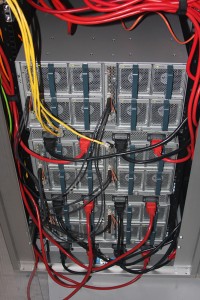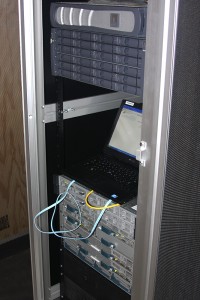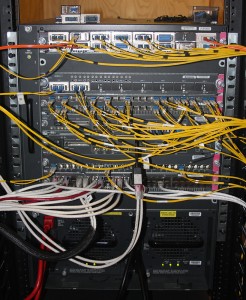The WOU EDW (data warehouse), VDI and Moodle have all been moved from spinning drive storage to SSD storage, utilizing the NetApp EF550. VDI is running on a RAID 0 pool, while Moodle, Oracle and Cognos are running on RAID 6.
The server side utilizes the Cisco UCS blade platform. The RedHat operating system runs on VMware. The communication between server and storage is via a HA pair of Cisco Nexus 5000’s, utilizing 8Gb fiber-channel SFP’s.
Significant data throughput improvements has been noted on the following three applications:
- Data Warehouse (utilizes both Cognos Insight and Oracle 12c database)
- Reports that previously took 25 – 30 seconds to complete now finish in 5 – 10 seconds
- The user experience, including moving through menu items, creating queries and reports within Cognos, has increased significantly
- VDI (virtual Windows 7 desktop lab environment running on VMware)
- 200 concurrent lab VMs, all running on an NetApp EF550. Previously these 200 VMs were spread accross two FAS-3250 heads, a FAS-2240-2 with flash pool and a FAS-2240-2
- Windows logins that previously took 45 – 80 seconds, now take 20 – 25 seconds
- Moodle version 2.7.1
- The user load is currently peaking at about 186 users on the current term Moodle server. See graph here
- The http response time on the current term, running on EF550 SSD drives averages 25 milli-seconds, with 60 milli-second peaks. See graph here
- The http response time on last summer term, running on spinning drives is averages 291 milli-seconds, with 1,635 milli-second peaks. See graph here
- Differences in latency between spinning drives and SSD drives were significant during several load test. See graph here The large spike on the right side of the graph was 580 users utilizing spinning drives, while the small bump further to the right of the spike was 5,125 users utilizing SSD drives.




